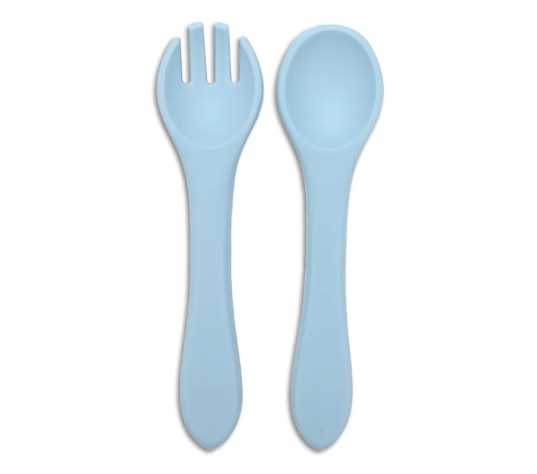Understanding Heat Resistance in Silicone Spoons
What Makes Silicone Heat-Resistant?
But silicone has an unusual chemical composition that prevents its heat resistance from decomposing. Silicone is a flexible long-lasting substance that is comprised of oxygen, silicon, carbon and hydrogen.\ to Side Sticker(Blue) to Side Sticker(Blue) The molecular construction of silicone is capable of handling heat far in excess of what any espresso maker could dish out. Unlike most traditional materials, silicone has an outstanding molecular structure which gives it extreme heat resistance. This also means that heat resistant silicone spoons won't change shape in high temperatures. That makes silicone spoons an ideal option for safe, heat resistant kitchen tools.
Typical Temperature Thresholds (Up to 482°F)
Most heat-resistant silicone spoons are heat resistant up to 482°F (250°C), they are stable when cooled down. Silicone is more resilient and heat resistant than other construction materials, such as regular plastic, which can degrade, warp or melt under extreme temperature conditions, depending on their specific heat tolerance. Knowing these temperature limits is essential for safe cooking. Simply put, it assures you that your silicone utensils are safe to use so that you’re not introducing any accidental dangers into your life whenever you cook.
Factors Affecting Thermal Performance
Various factors affect the thermoconductivity of silicone ware. The silicone composition and quality used can greatly influence its thermal resistance. For instance, generally better silicone provides higher performance even in the high-temperature environment.. Thickness is a major factor as well as thicker products can hold heat longer, and is more durable under radical temperatures. But the addition of additives or fillers in some silicone products can reduce its thermal efficiency and its resistance to heat. Top grade silicone is non-stick, BPA-free, latex free, 100% food-grade, and preventing the growth of grime and bacteria ensures the health of your loved ones.
Silicone vs. Plastic and Metal: Heat Tolerance Comparison
Why Silicone Outperforms Plastic Utensils
Heat Tolerance Silicone kitchen utensils are much more heat resistant than Plastic or other metal utensils which can melt easily. Silicone does not melt or warp when exposed to direct heat or stored in the heat, so it will not retain any odors from bad oils and other elements, heat tolerance makes it great for cooing. This is one reason why silicone is safer to use — plastic utensils do not fare well in high heat and can leech chemicals, not to mention they tend to lose shape. Silicone proves its reliability because it won't melt, distort, or discolour after numerous uses or hot-cellared when compared to plastic material.
Limitations of Metal Utensils in High-Heat Cooking
Metal cooking utensils have certain restrictions when used in cooking with a high intensity of heat. Take metal, for example; this material effectively conducts and transfers heat, so it can get extremely hot to touch, and the risk of burns turns out to be very real. As well, metal can react with acidic or alkaline foods and can impart a metallic taste. By using silicone utensils, these hazards disappear because the flexibility and convenience enable you to perform your cooking tasks hassle-free.
Real-World Cooking Scenarios: Melting Points Tested
The melting test can demonstrate in real cooking situations that the silicone is the superior material when it comes to resisting heat. But beyond a write-up, we can run them through practical tests like baking and stovetop use to demonstrate how silicone utensils hold up against heat in ways that plastic and metal don’t. Noting any changes following experiment verifies that silicone is the more dependable material and can withstand heat stress.
Safety Under Heat: Chemical Stability of Silicone
FDA and Food-Grade Certification Standards
When it comes to silicone kitchen products, safety is paramount. FDA approved With FDA clearance, you can rest assured that silicone products are safe. These utensils are made from premium silicone, and have to pass the pinch test, which ensures that over 97% of the silicone is pure, meaning you can rest assured that these can safely touch food and liquids. By following these strict standards, manufacturers ensure that consumers can use their silicone cooking tools while knowing it is safe in their daily food preparations. Certification focus emphasises peace of mind for consumers in the kitchen using FDA-approved silicone products.
Debunking Myths About Toxin Leaching
There are a lot of myths surrounding silicone utensils and the likelihood of food chemicals leaching. Scare stories Some people are wary of silicone bakeware because of urban myths they've read online, which suggest chemicals can leak into food. Studies show that food-grade silicone is consistent and never produces off flavors or odors even over repeated cooking. Material science and culinary experts alike can attest to the fact that silicone is safe; it’s not reactive when heated, so health-conscious cooks can rest assured using silicone kitchen tools.
Swiss Study Insights on Extreme Temperatures
Independent studies in Switzerland have also added to silicone's high-temperature rep. These tests demonstrated the durability of silicone as it proved able to maintain soundness despite intense exposure to heat. The study also highlights silicone’s durability, validating it as a safe option for cooking tools used in the high heat and pressure of professional cooking environments. The statistical results in these studies always showed the strength of silicone, which proved its excellence and safety against other materials.
Maximizing Heat Resistance Through Proper Use
Avoiding Direct Flame Exposure
Heat resistance or cold u2013 you can use all of these silicone spoons with any cooking condition without the worry of damaging the spoon or melting off. Silicone is heat resistant but not fireproof; silicone oven gloves, oven mitts, trivets, etc are a great solution to protect your hands and arms from the heat. To maintain their durability, use them only on low flame There are silicone cooking utensils to be used only on high flames as they were made of 100% pure crack free silica gel. It is important that the manufacturer's use and care recommendations are followed. These suggestions also help your kitchen tools remain functional and intact for a safer cooking experience.
Oven vs. Stovetop Safety Guidelines
The safety guidelines for using silicone utensils on ovens and stovetops are not the same, and it’s important to know this. Contrary to this, when it comes to oven, silicone is used for baking and roasting due to its heat resistance which will reach up to 482°F, 250°C. But please do not let your cookware directly contact the source of heat. Some of the safety tips for silicone utensils is to avoid direct flames and hot plate surfaces which is important to help maintain their quality. By following these tips when cooking with silicone, your silicone utensils will last you for many years to come.
Signs of Thermal Degradation to Watch For
Detection of thermo-degradation markers on silicone spoons is essential to avoid dangerous and inefficient use for the customer when cooking. Prime indicators to watch for are discolouration, breakage, or deformation, which might indicate a structural weakness in the utensil. Regular monitoring is designed to pinpoint these problems early, so they can be addressed before they impact cooking quality or safety. By regularly evaluating the state of your silicone tools, you can preserve them as heat resistant and safe for cooking. It is important to replace any utensil displaying these symptoms in order to maintain the overall food safety of preparation.
Care Tips to Preserve Heat Resistance
Cleaning Methods for Long-Term Durability
Chances are, if you have silicone kitchen products, you’ve probably learned that the heat-resistant properties of these cookware helping to keep them from melting or warping. The key to keeping your silicone kitchen gear in good shape is proper cleaning. Begin with washing your silicone spoons with warm soapy water and soft sponge to avoid any surface scratches. Do not use abrasive cleaners that can damage the silicone membrane and reduce its heat resistance. For maximum sanitizing, you might deep-clean with a paste of baking soda and water every now and then to get rid of bacteria while still preserving the silicone.
Storage Best Practices
Prevention Proper storage will help keep silicone utensils from damage. Silicone spoons should be stored in a dry, cool place out of direct sunlight to maintain quality and protect from excessive weathering and/or melting. Warm Tips The track can be installed in different ways, such as hanging them or mounting them separately to avoid bending or warping. It's an easy care practice that keeps the shape and heat-resistant features of silicone spoons in the long run.
When to Replace Worn Silicone Spoons
Safe Replace Silicone spoons know when it's time for a new arm,shop spoon. Generally, it's time to replace your silicone spoons if they become discolored, feel brittle, or deformed which may affect how well they perform for cooking. Routine maintenance will give you an opportunity to change these out before trouble starts, so you can continue cooking safely and efficiently. Keep an eye out for any changes in texture or look as an indication it's time for a new one.
FAQ
How does silicone achieve heat resistance?
Silicone's heat resistance is due to its molecular structure, which comprises silicon, oxygen, carbon, and hydrogen, enabling it to withstand high temperatures without breaking down.
What temperature can silicone spoons tolerate?
Most silicone spoons are heat-resistant up to 482°F (250°C), making them suitable for high-temperature cooking environments.
Are silicone utensils safer than plastic and metal?
Yes, silicone utensils are considered safer as they do not release toxins at high temperatures like some plastics and are easier to handle compared to metal in heat-intensive scenarios.
Can silicone utensils be used under direct flames?
No, while silicone is heat-resistant, it is not flame-proof and should not be exposed to direct flames as it may char or degrade.
How can I preserve the heat resistance of silicone spoons?
Proper cleaning and storage methods, along with regular inspections for signs of wear, help maintain the heat resistance and safety of silicone spoons.


